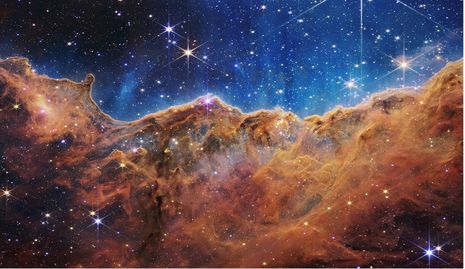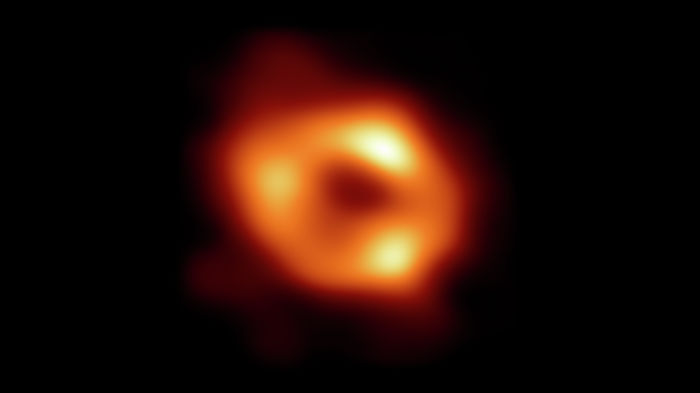James Webb Space Telescope’s first images of the Cosmos will take your breath away
After last week’s reveal of the first images from the telescope, Tom Howarth explains what else is on the horizon

After 30 years of international collaboration and $10 billion of spending, the first full-resolution images from the James Webb Space Telescope (JWST) have finally been revealed to the world – and they were worth the wait.
Dubbed the successor to the famous Hubble telescope, the JWST is a joint project of the US, European and Canadian space agencies which aims to shed light on the mysteries of the Universe like never before. From the magnificent Carina Nebula (pictured above), whose mountains and cliffs of interstellar dust play host to the birth of new stars, to hunting for alien life on far flung exoplanets and even peering back over 13.5 billion years ago close to beginning of time itself, the JWST is a floating Swiss army knife of astronomical discovery.
Roughly the size of a tennis court, Webb is fitted with a primary mirror 6.5 metres in diameter which collects infrared light, a wavelength longer than the visible range that can be detected by our eyes. Using this type of light allows the JWST to penetrate through the dusty shrouds of nebulae and galaxies that would absorb shorter wavelengths, making visible the secrets that lie inside. It’s also key for observing light from distant objects (like the first galaxies formed after the Big Bang, for example), since this is stretched to infrared – via a process called “redshifting” – as it travels for billions of years across the expanding universe.
“These measurements will seek to determine the materials that make up distant planets, in the hope that they might contain the ingredients for life”
The telescope’s capability to observe this ancient light was showcased in the first released image. The deep-field picture, unveiled by Joe Biden on the 11 July, is the highest resolution infrared image of the Universe ever captured and revealed galaxies unseen by science. The image shows a region in space known as SMACS 0723, which is so densely packed with galaxies that it acts a gravitational lens, bending and magnifying light from more distant galaxies, some of which formed when the Universe was under a billion years old. Equivalent in size to a grain of sand held at arm’s length, the image took just 12.5 hours to capture – compared to the weeks required by Hubble at a reduced resolution and depth. And that’s only the beginning. Over the coming years, researchers hope to use longer exposures to transport us even further back in time, to the very first stars that formed after the Big Bang.
While images of the cosmos are spectacular, roughly a quarter of Webb’s first observation cycle will be spent performing spectroscopy measurements of exoplanets. Spectroscopy works by splitting light from an object into its component parts and can reveal information about what the target is made up of. Instead of producing dazzling images, these measurements will seek to determine the materials that make up distant planets, in the hope that they might contain the ingredients for life. In this first round, a spectrum of light from a gaseous planet approximately 1,150 light years from Earth was able to show, with immense precision, that water vapour is present within its atmosphere. This planet, known as WASP-96p, is unlikely to support life due to its close proximity to a local star making it much hotter than Earth. However, when Webb is pointed at planets more similar to our own in the future, the same technology can be employed to determine whether or not they might be habitable.
“The deep-field picture is the highest resolution infrared image of the universe ever captured and revealed galaxies unseen by science”
Perhaps the most mesmerising photo of all is a visual grouping of five galaxies, known as Stephen’s Quintet. Containing approximately 150 million pixels, it’s the largest and most developed of the new results; showing in exquisite detail the dance that galaxies perform as they interact and collide. Webb’s array of instruments will allow astronomers to uncover the secrets behind these events, including how collisions cause the birth of new stars and what happens as supermassive black holes found at the core of some galaxies gobble up surrounding material.
From the birth of new stars to their death, the JWST intends to capture and study their entire lifespan. The Southern Ring Planetary Nebula is an example of a star in the final stages of life, ejecting waves of gas and dust into space. This process, which can last for tens of thousands of years, occurs as the dying star loses chunks of its mass in episodes, forming successive shells around it. The further the shell from the core, the earlier it was dispelled, and it is hoped that Webb can help untangle the history of systems such as this through the succession of the waves.
We’re now just six months into the JWST’s 20-year lifespan, and already this magnificent feat of engineering has dramatically changed the way we view the cosmos. These first images contain a treasure trove of new information, yet they’re really just a demonstration of the capabilities that this telescope possesses. In the coming years as Webb is pointed at more targets, studying them in greater detail, we’ll no doubt be bombarded with more interstellar masterpieces and leaps forward in our understanding of how the universe came to be. No one quite knows what’s lying out there, just waiting to be discovered – and that’s the fun part.
 News / Uni members slam ‘totalitarian’ recommendation to stop vet course 15 January 2026
News / Uni members slam ‘totalitarian’ recommendation to stop vet course 15 January 2026 Science / Why smart students keep failing to quit smoking15 January 2026
Science / Why smart students keep failing to quit smoking15 January 2026 News / Cambridge bus strikes continue into new year16 January 2026
News / Cambridge bus strikes continue into new year16 January 2026 Interviews / The Cambridge Cupid: what’s the secret to a great date?14 January 2026
Interviews / The Cambridge Cupid: what’s the secret to a great date?14 January 2026 Comment / Will the town and gown divide ever truly be resolved?12 January 2026
Comment / Will the town and gown divide ever truly be resolved?12 January 2026









